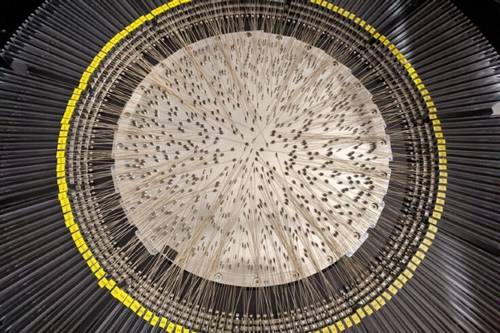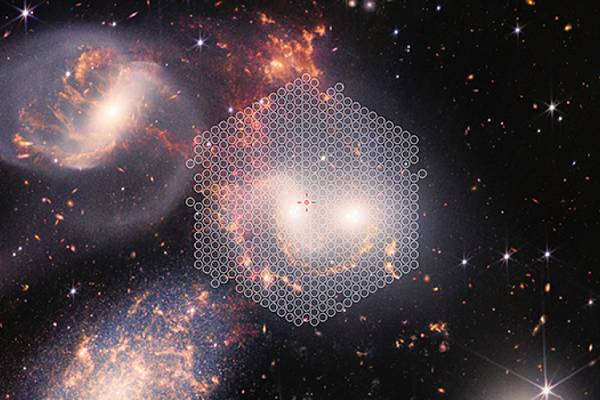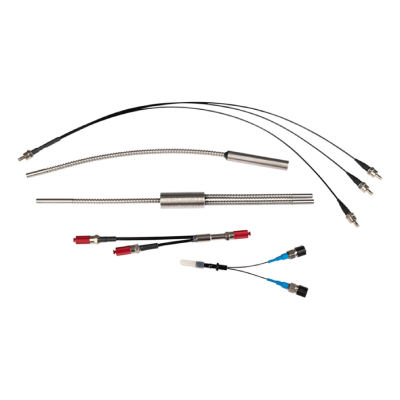SpectrographMulti-fiber
New generation multi-fiber spectrograph
SEDI-ATI has participated in the design of the LIFU and one MOS by the design, the setting up of manufacturing processes and the assembly of fibered sets.
MajorContraints
- Mobility of the spectrograph: a resistant and flexible product is required,
- Temperature changes from -5°C to + 40°C,
- Risk of damage to the fibers causing a loss of information,
- Maximizing the life of fiber optic cables.
TheChallenge
Build a robust and flexible assembly of approximately 1000 optical fibers that will be mounted on the fiber positioner of the WEAVE spectrograph.
What is the WEAVE spectrograph?
WEAVE (WHT Enhanced Area Velocity Explorer) is a fiber-optic multi-object spectrograph installed on the William Herschel 4-meter telescope at the Roque de los Muchachos Observatory on the island of La Palma in the Canary Islands. WEAVE collects light at the primary focus of the telescope and transports it by fiber optics to a Nasmyth platform, 33 meters away, where the spectrograph is installed.
What is the mission of the WEAVE spectrograph?
The instrument can observe no less than 1000 celestial objects per hour. The scientific cases of interest are thus numerous from galactic archaeology for which WEAVE will complete the data collected by the Gaia mission (to improve our knowledge concerning the structure, the formation and the evolution of the Milky Way over billions of years), stellar, circum-stellar and interstellar astrophysics, the study of galaxy clusters and galaxy evolution, a survey conducted jointly with the LOFAR radio telescope and quasars. WEAVE will thus make it possible to solve eight major space surveys.
Observation of the first light
In December 2022, WEAVE successfully collected its first lights from Stephan’s Quintet, a group of five galaxies, some of which are colliding, located in the constellation Pegasus, about 280 million light-years from Earth (Image 1 on the top : Observation mode of WEAVE pointing to the Shephan’s Quintet for the observation of the first light. It collects the light of 547 points of the sky which will be analyzed by the spectrograph. Credits : © NASA, ESA, CSA, STScI ; Aladin).
Indeed, the spectra showed the merger of two galaxies due to the presence of gas outside the galactic disks of NGC 7318a and NGC 7318b and a speed of movement of 2.9 million kilometers per hour. Thanks to these new facilities, the observations made are almost 100 times faster than before. The data produced are of high quality which promises major future discoveries. WEAVE produces spectra of regions in two hours and is very accurate in measuring velocities to within 12.5 km/s.
Gavin Dalton, WEAVE principal investigator, said, “The wealth of complexity revealed in this way by a single detailed observation of this pair of nearby galaxies provides a glimpse into the interpretation of the millions of spectra that WEAVE will obtain from galaxies in the distant Universe, and provides an excellent illustration of the power and flexibility of the WEAVE facility”.
WEAVE’s optical fibers
WEAVE offers three observation modes that lead to three geometries for fiber optic cables. There are:
- 2 MOS (multi-object spectroscopy) of 1008+960 fibers, for the observation of individual point objects,
- 20 mIFUs (mini integral-field units) of 37 fibers each, for the observation of extended objects with small field integrals,
- 1 LIFU (large integral-field unit) of 547 fibers, for the observation of a large integral field.
A strong French contribution
In France, WEAVE has been supported by the CNRS, the Observatoire de Paris-PSL and the Observatoire de la Côte d’Azur. GEPI is responsible for the work package associated with the fibers. SEDI-ATI is one of the three industrial partners who assembled the cables.

SEDI-ATI’s contribution
Because of our multiple contributions in the design of complex fibered assemblies for large instruments such as GIRAFFE, MEGARA or MOONS, we were asked to collaborate on WEAVE. We have worked on the co-design, development and assembly of the LIFU and MOS fibered assemblies of the WEAVE spectrograph. We brought our expertise in the choice of materials, fibers, and protective sheaths. And we manufactured and delivered 1 LIFU and 1 MOS.
- The LIFU is composed of 547 optic fibers of 170 microns of core. On the telescope side, the fibers are compacted into a hexagonal module with a lens array. On the spectrometer side, the fibers are placed in a slit to compensate the field curvature.
- The MOS has 960 unit fibers of 85 microns of core, divided into 40 strands of 24 fibers of 33 meters. On the focus side of the telescope, each fiber ends with a unitary magnetic button composed of a return prism of about 1.5 mm overhung by a lens array. On the spectrograph side, the fibers are put back in the slit to recompose the field curvature of the telescope.
The product was designed and assembled with the assurance of maintaining an optimal rate of information transmission given its exceptional length of nearly 50 kilometers (Image 2). In fact, we managed to deliver fibre sets of 547 and 960 fibres, each 33 metres long, with a remarkable rate of damaged channels of less than 10-3.
SEDI-ATISolution
- Co-design of LIFU and MOS fiber assemblies
- Choice of materials, fibers and protective sheaths
- Assembly of fiber optic cables.
AdvantagesSEDI-ATI
- Recognized expertise in recipe development for large instruments,
- Use of compact and reliable materials,
- Handling of long fiber lengths with a damaged channel rate of less than 10-3.
Related product
Fiber optic bundle assemblies for spectroscopy
Fiber-optic bundles are perfectly adapted to perform diffuse reflectance spectroscopic measurements.



